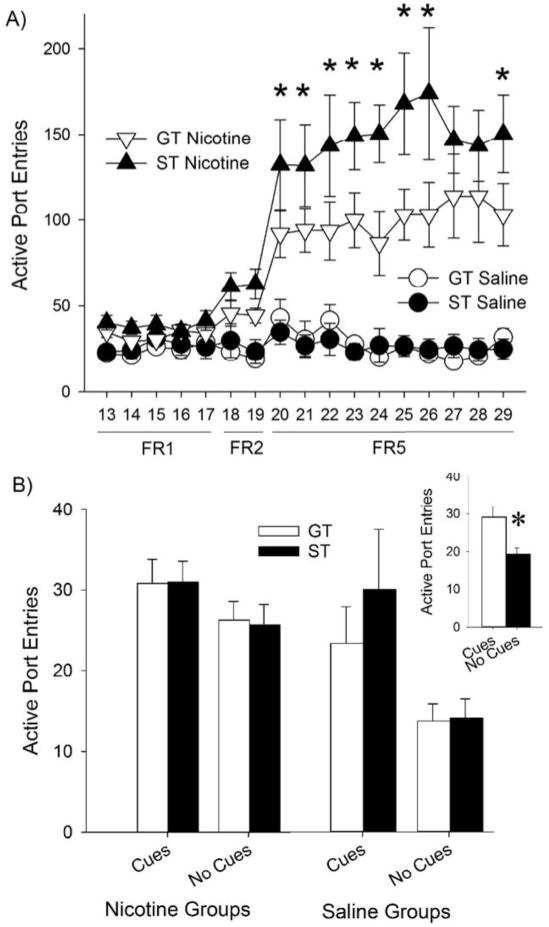Fig. 2.
Sign-trackers responded more for nicotine than goal-trackers, but were equally sensitive to the removal of the light-cue. Panel A shows the number of active port entries in rats self-administering saline or nicotine. The schedule of reinforcement was increased from FR1 to FR5, as indicated on the ordinate. Asterisks denote significant differences (ps < 0.05) between sign-trackers (ST) and goal-trackers (GT) in the nicotine-treated groups. Panel B show the effect of light-cue removal on days 11–12 (“No Cues”, the average of the two days is shown), compared to responding in the presence of the light cue on day 9–10 (“Cues”). Note that rats still receive nicotine or saline infusions according to their group assignments. The inset depicts marginal means for the main effect of Cue removal; the asterisk denotes significant differences between the Cues/No Cues sessions. Data are presented as means +/− SEM.

